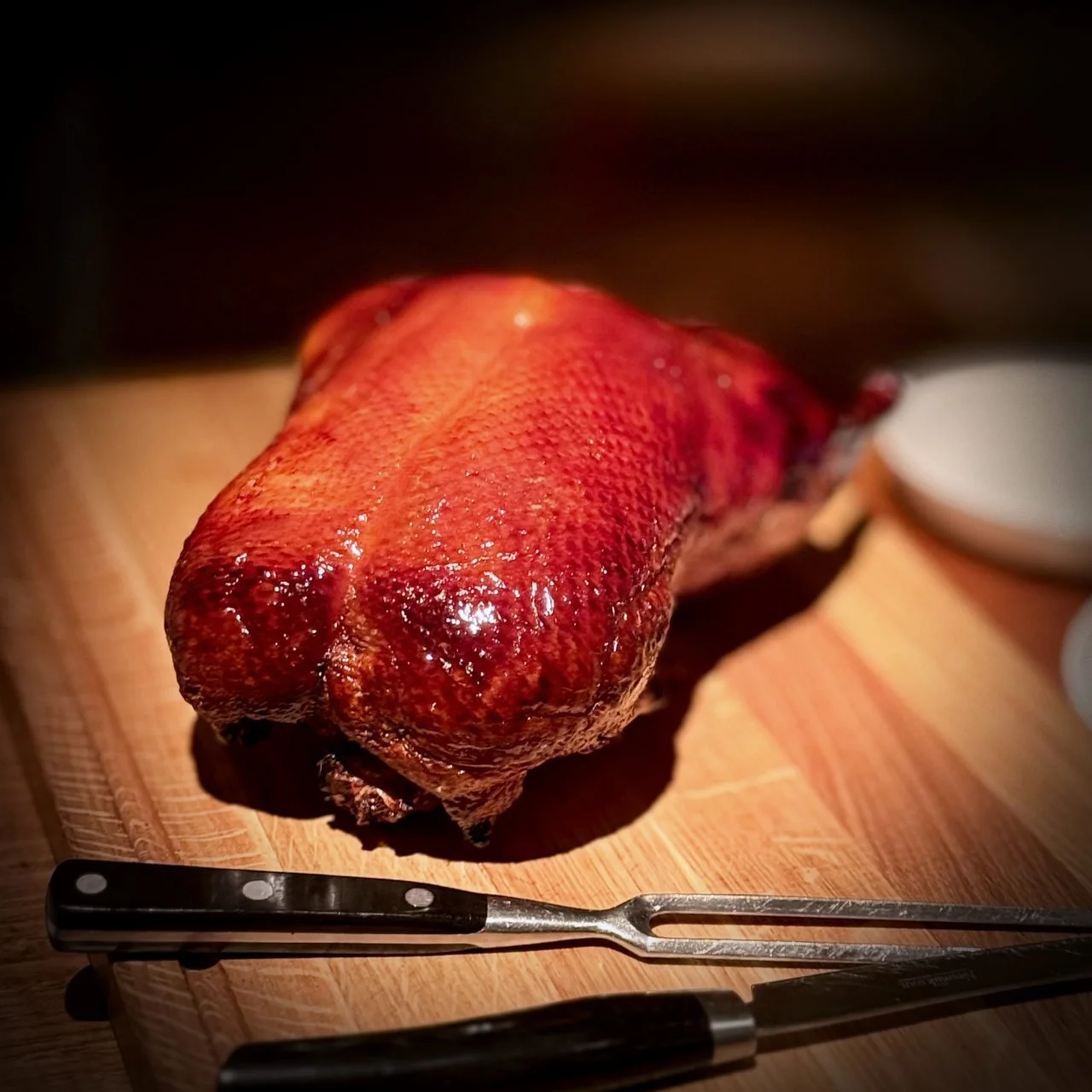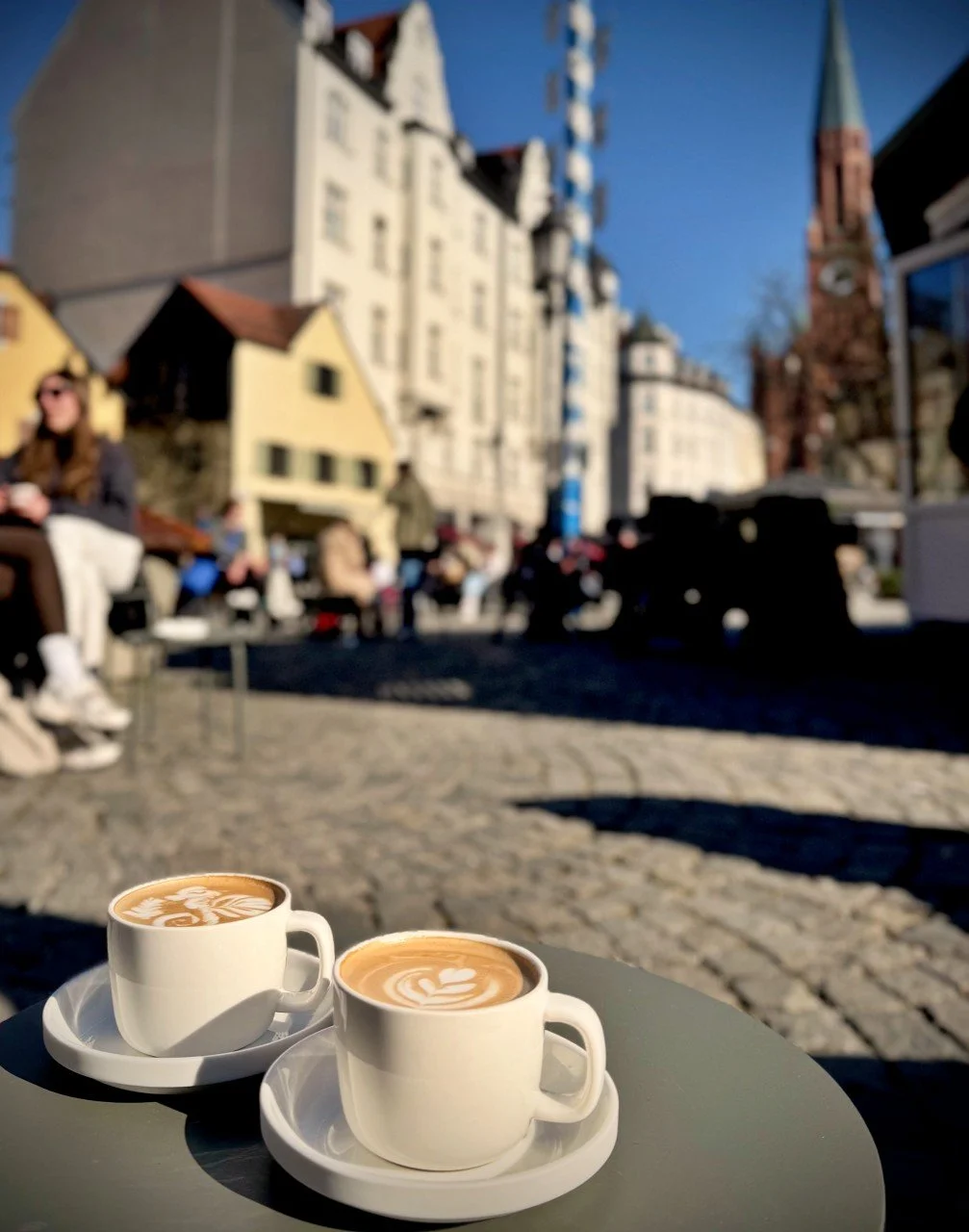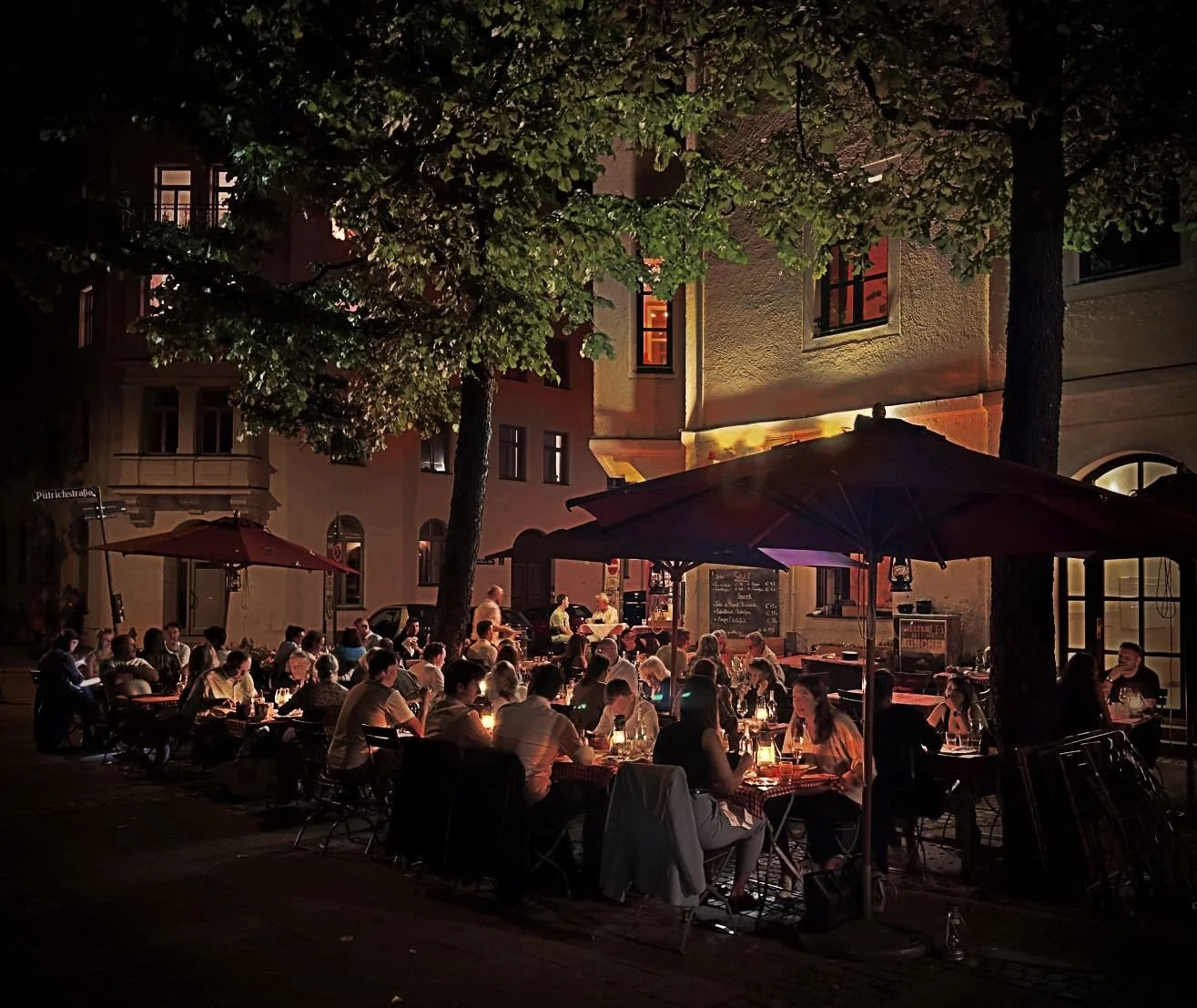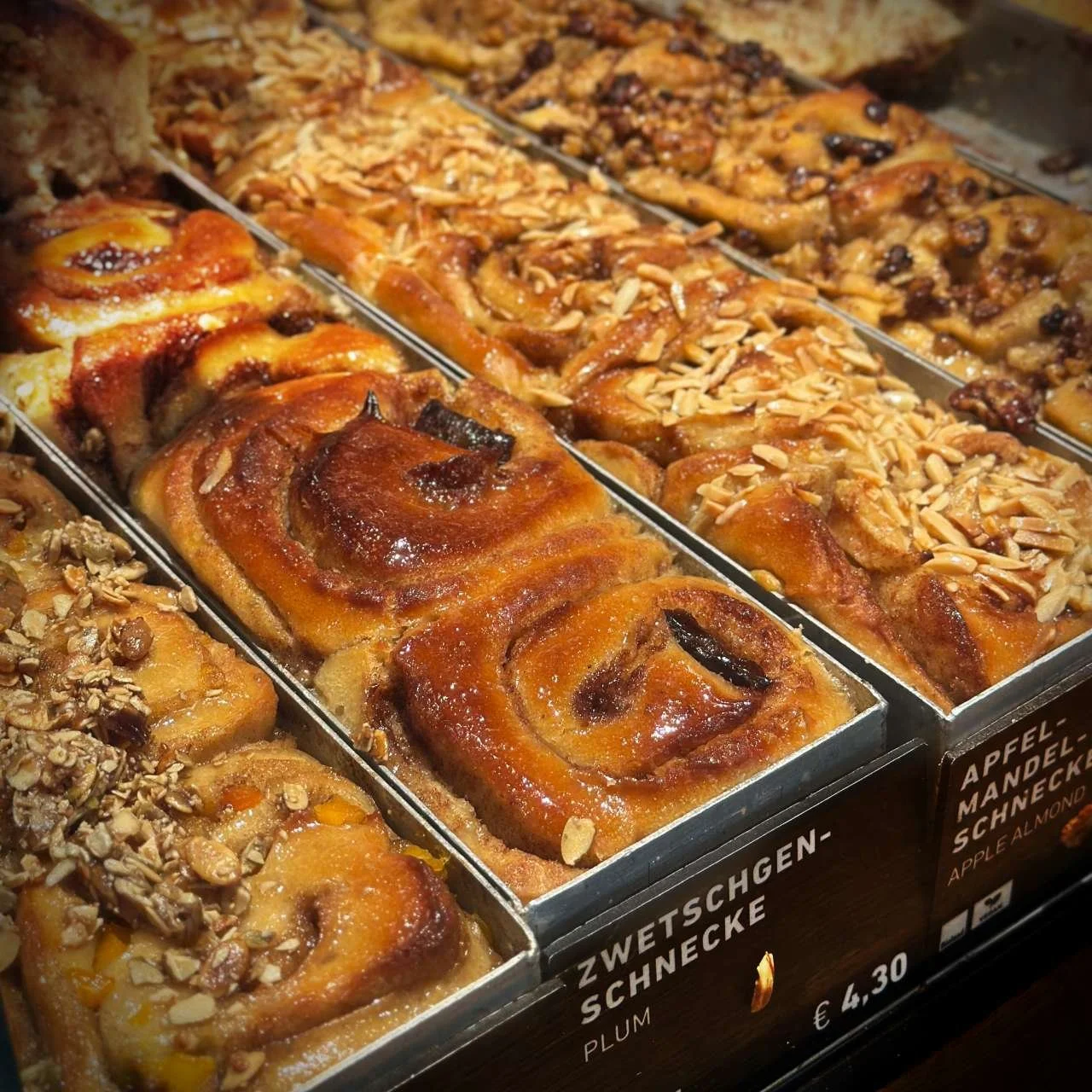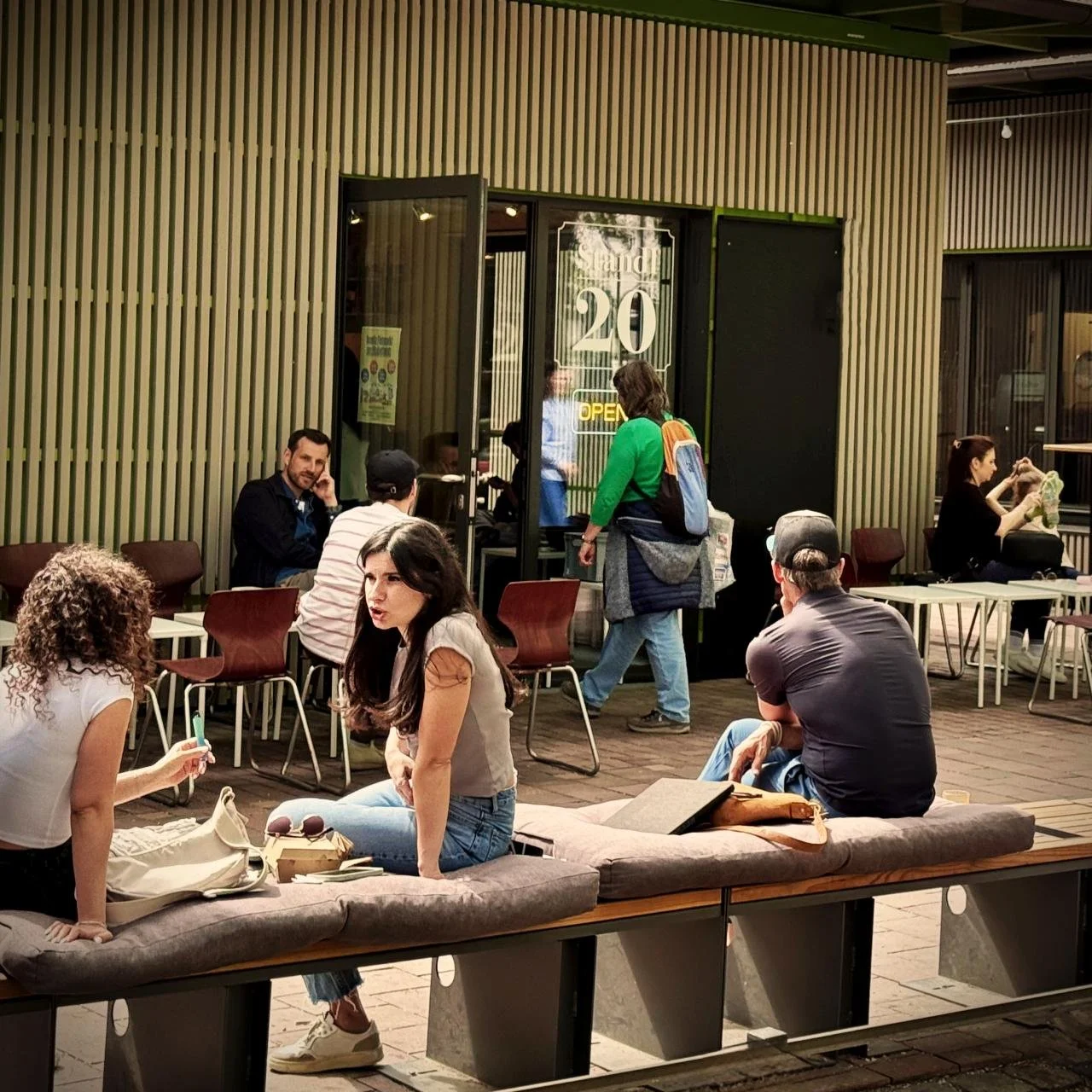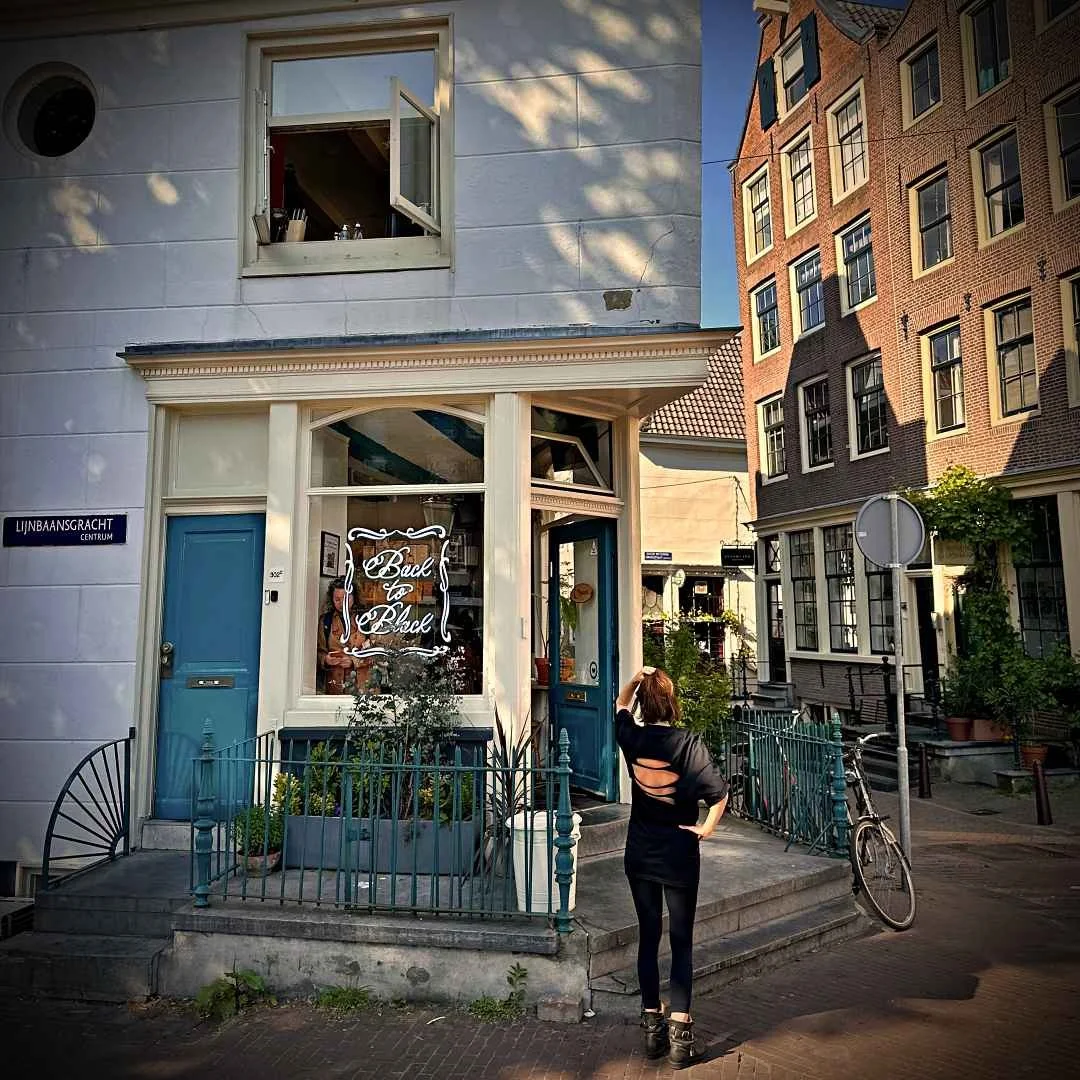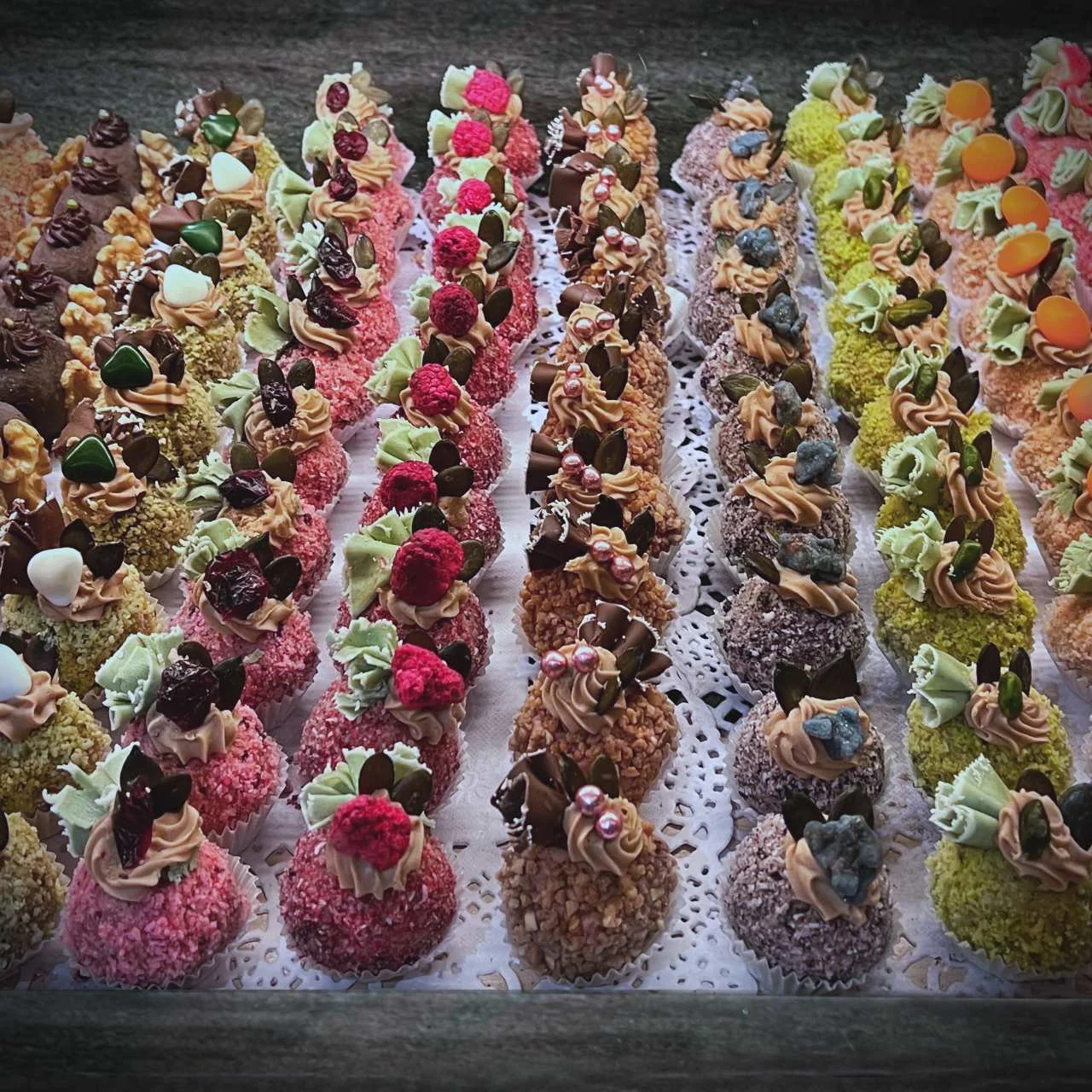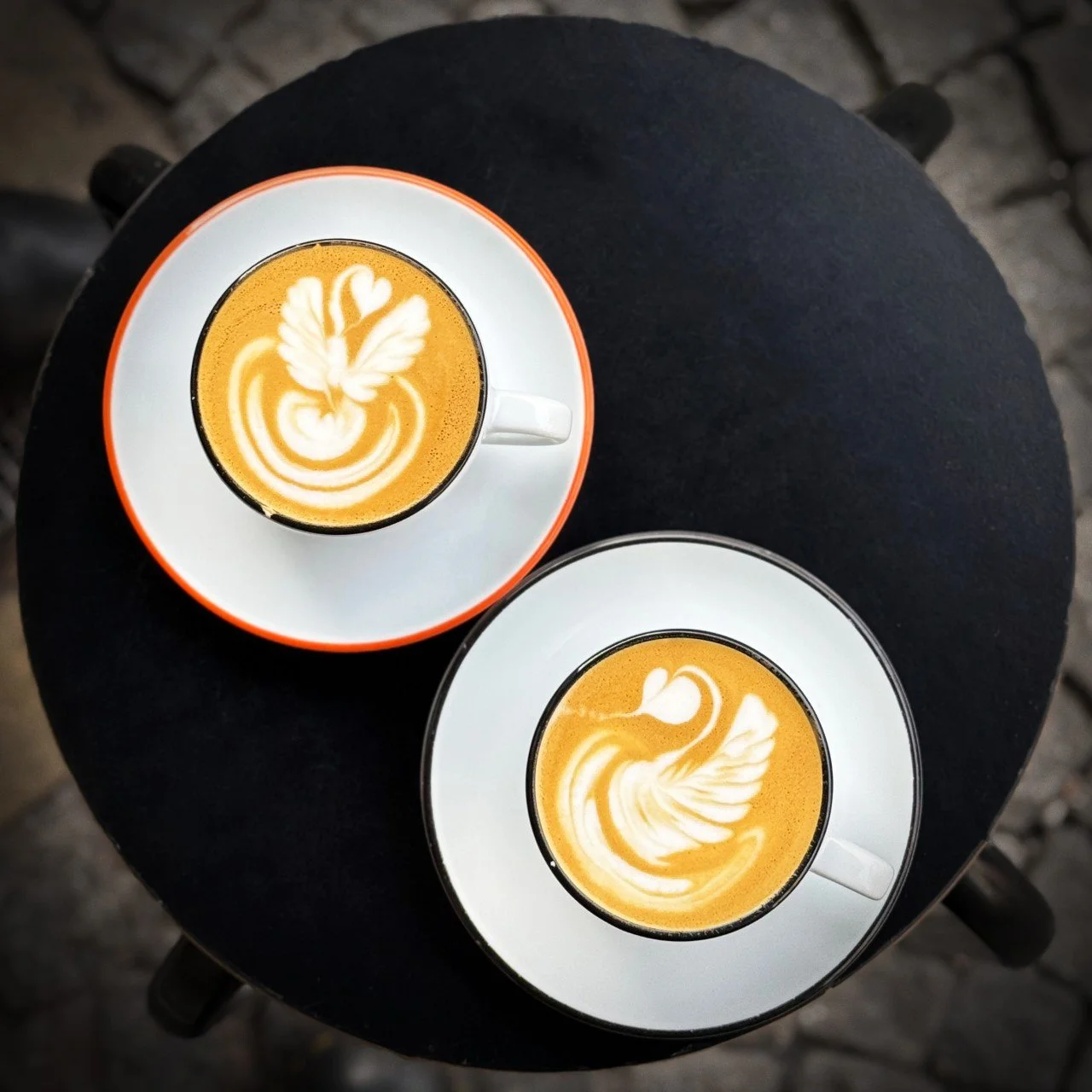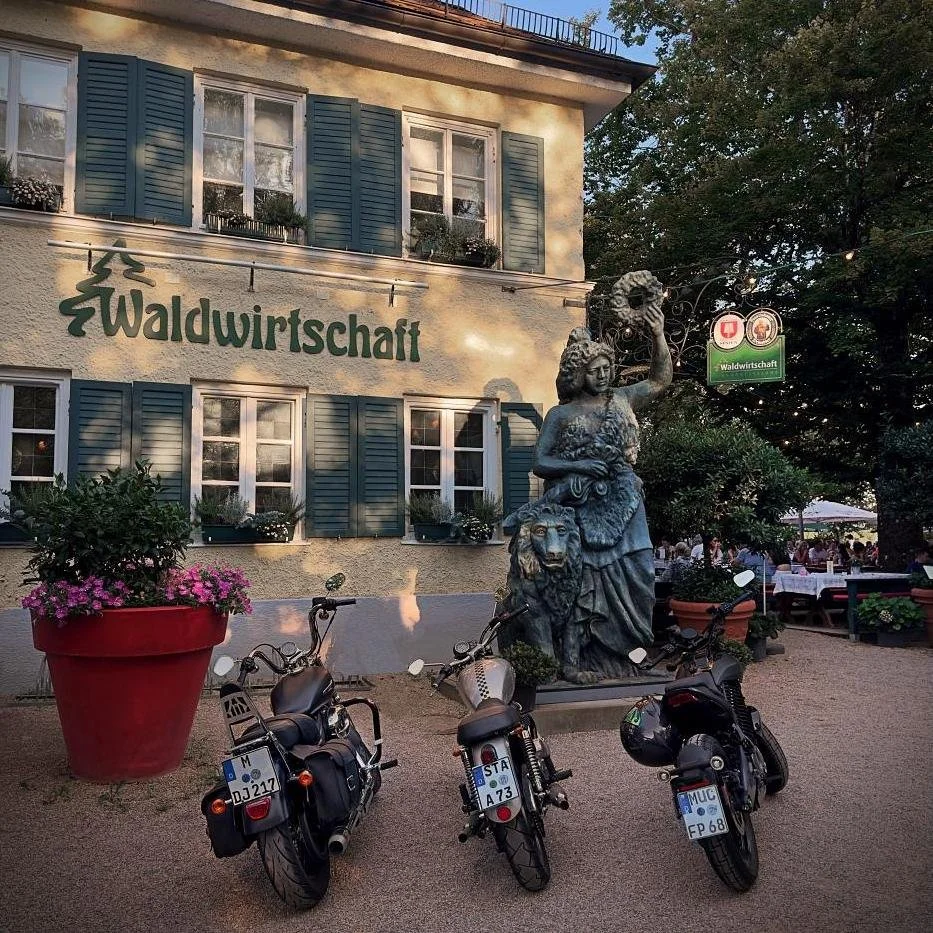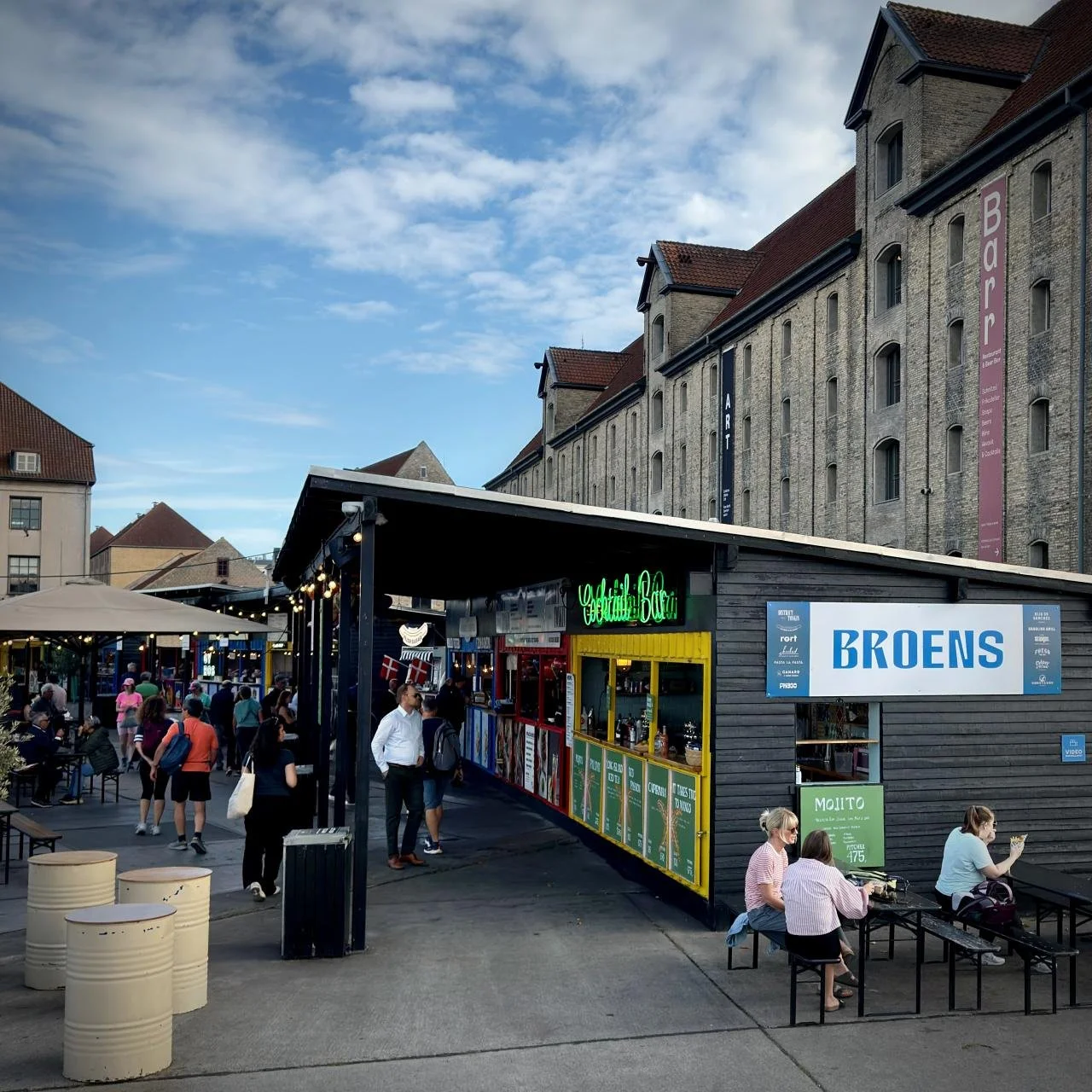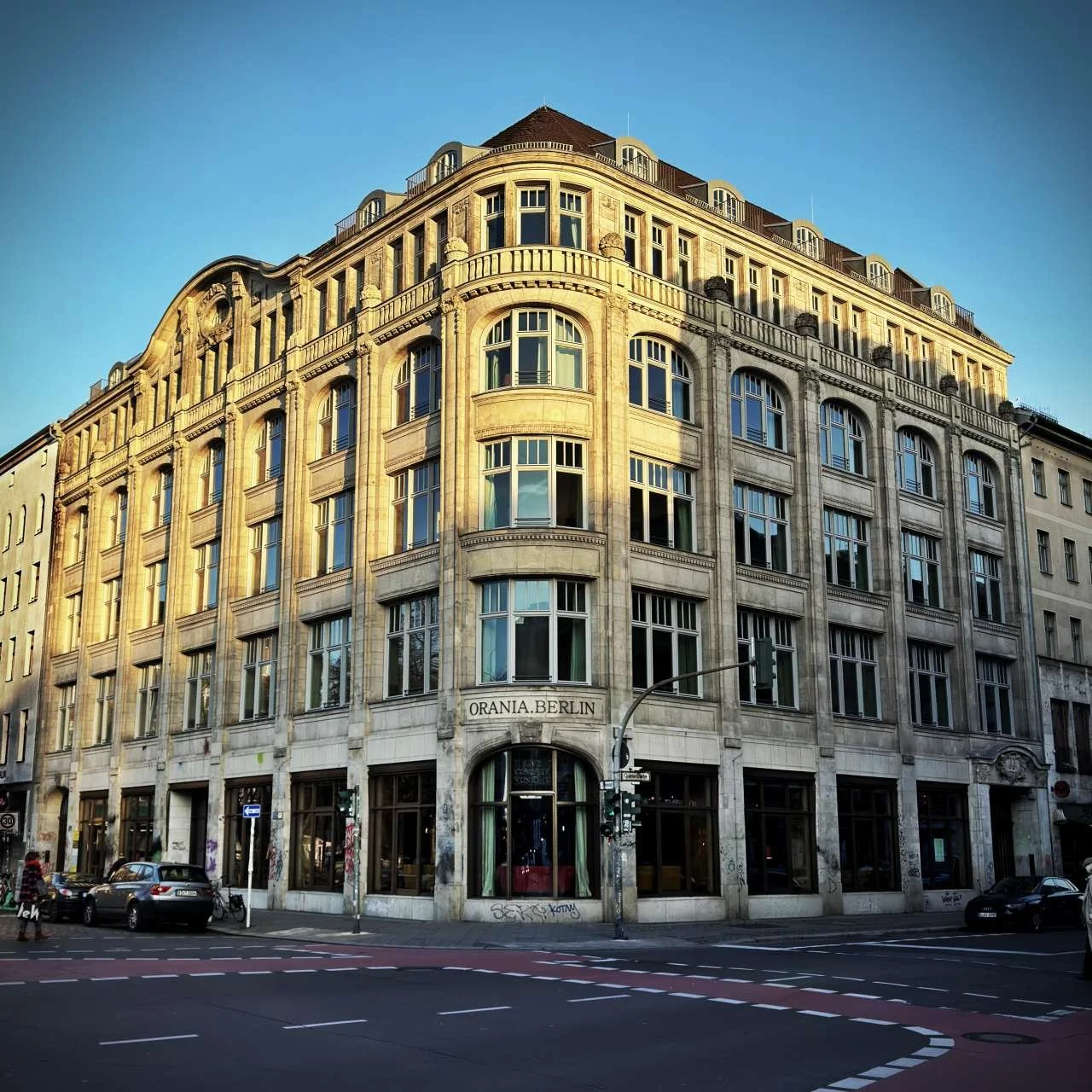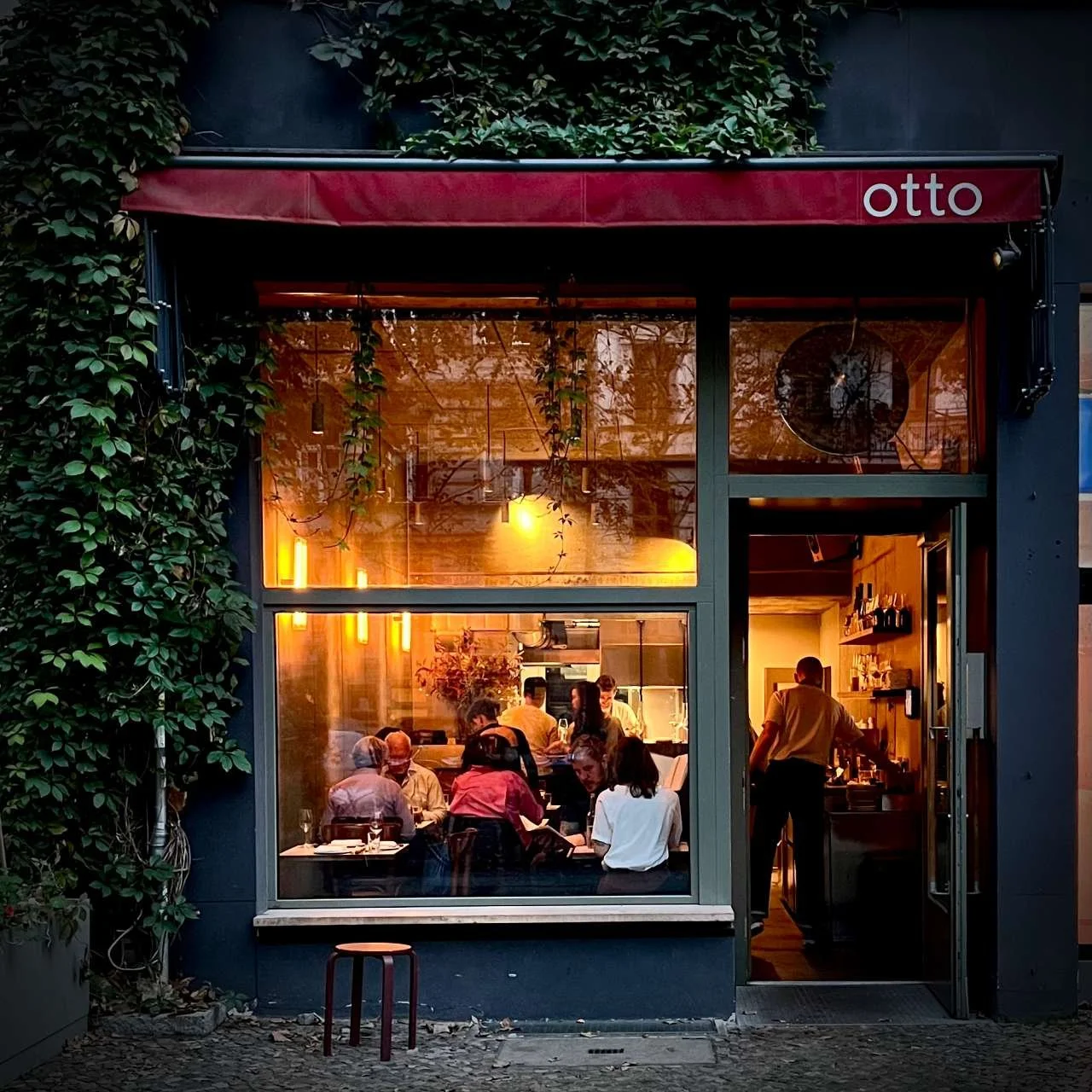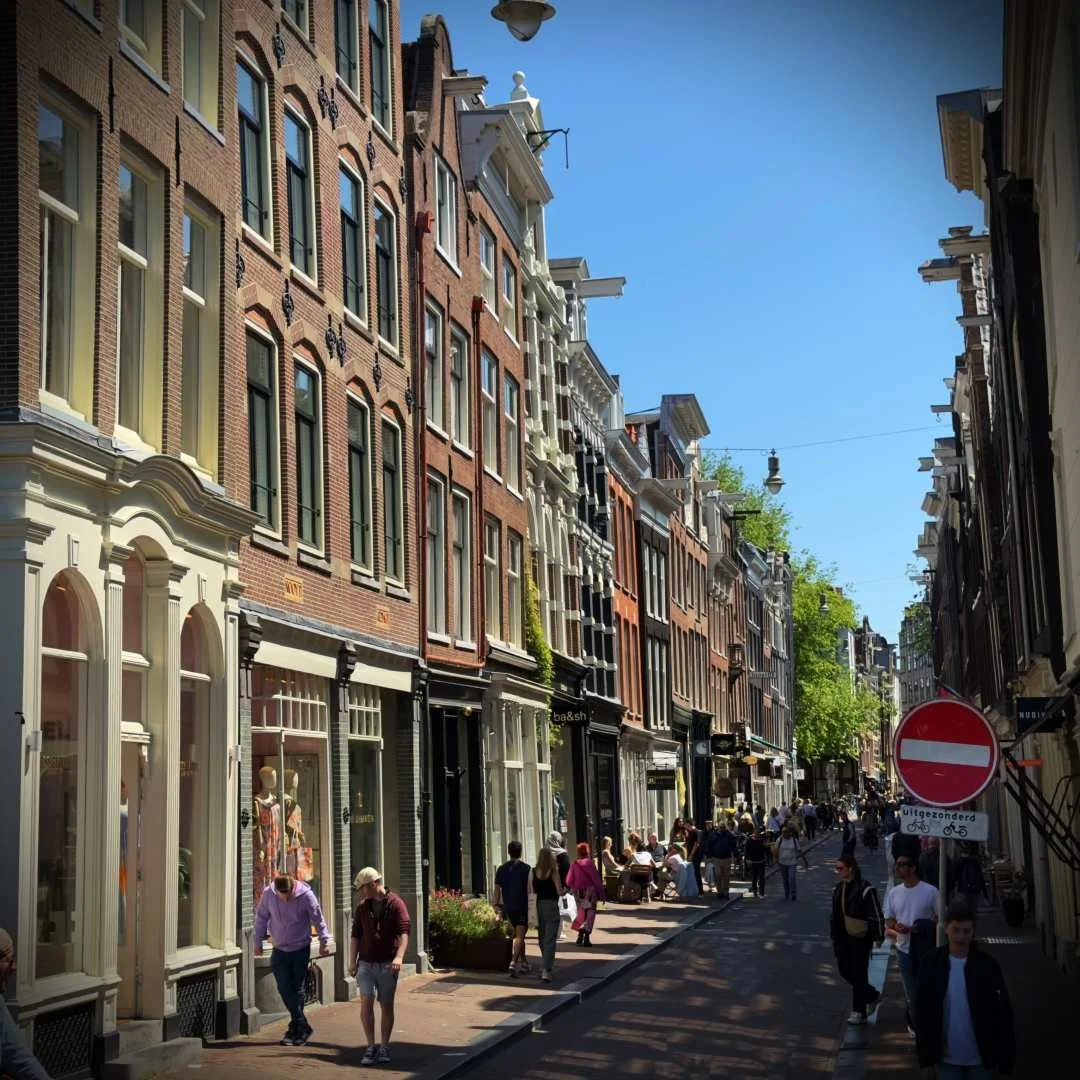
cities we love
stays we enjoy checking into
our favorite shops
the most charming cafés
our most beloved restaurants

I’m rarely the type to march through the supermarket, checklist in hand, darting from aisle to aisle like a woman on a mission.
More often, I meander through the shelves, half-lost in thought, on the lookout for inspiration.
That’s probably why the shopping cart of the lean marathon runner catches my eye - tofu, low-fat cottage cheese and a suspicious number of eggs.
It reminds me of a story a friend recently told.
In his office, an employee asked to speak with him urgently, in private.
Oddly, the man had skipped both his direct supervisor and that supervisor’s boss, going straight to my friend - the boss’s boss…
“Do you have anything gluten-free? So, no milk?”
“You mean lactose-free?”
“I’d prefer vegan.”
“Well, we have a fruit salad or some of our sandwiches can be made vegan. There’s also a bagel with…”
“I’ll take the scrambled eggs.”
“Ah. Okay. I thought you wanted something vegan?”
“No, just gluten-free. I always say vegan for that.”
“Alright, so we’ll leave out the toast with the scrambled eggs to keep it gluten-free?”
“No, that’s not necessary. Toast is fine.”
Anyone thinking this conversation is made up couldn’t be more wrong.
The late nineties had faded into the past and the enthusiasm of the new millennium was beginning to wane.
I had graduated from the Technical University of Munich as an architect and decided to stash my Buffalo platforms along with the low-rise jeans in the attic.
But slipping into the black turtleneck of the architecture guild in my late twenties didn’t quite feel right.
The creative spark of my studies had fizzled out in the dusty routine of office life, bogged down by liability clauses and dull government regulations.
I couldn’t muster much excitement for the idea of arguing with the building authority.
So my husband and I surprised our parents with the plan to open a café with a concept store.

Earth apple, Murphy, Tattie, Pratie, Tubers, Spud…the potato has been given the most delightful names.
Originating in South America, they traveled across Spain and Italy to spread throughout Europe. And for hundreds of years, they’ve been cultivated here.
But rarely have we seen potatoes in as many varieties as at Caspar Plautz at Viktualienmarkt.
The best part? This potato stand doesn’t just sell the raw spuds - it also serves up delicious lunch dishes crafted from them right on site.
The Torvehallerne are not just a feast for the eyes.
Two airy halls flank a large marketplace, which blooms with a sea of flowers.
Food trucks surround the square, offering delights like Korean Barbecue Chicken or tacos from Hija de Sanchez, making the choice deliciously difficult.
Inside the halls, we find a foodie paradise filled with Smørrebrød, cheeses, seafood, spices, cinnamon pastries, fresh juices, specialty coffee and everything a gourmet heart desires.
„It’s a caramel specialist shop in Stockholm” – that was the first thing we heard about Pärlans.
A caramel specialist?!? That could only mean a little slice of heaven made of cream, butter and sugar.
And that’s exactly what it is.
You’ll find this charming little shop on Nytorgsgatan in Södermalm.
The dark green awnings, adorned with the elegant Pärlans lettering, can already be spotted from Nytorget Park.
In this 1930s-style shop, you’ll find lovingly wrapped caramels and pralines, along with the most delicious soft-serve ice cream topped with homemade caramel sauces, caramelised popcorn and your choice of sprinkles.
Peter, Claus, and Caspar are the three founders of Coffee Collective. Driven by their passion for exceptionally good coffee, their commitments include sustainability from the coffee farm to the coffee cup and fair trade through close collaboration with farmers.
Despite their achievements, including winning the World Barista Championship and the World Cup Tasting Championships, they remain humble, letting their coffee speak for itself in the best possible way.
A bit like in London - where tidy houses line quiet neighborhoods around well-kept little parks and where tiny cafés display pastel-colored cupcakes in flower-framed windows - that’s the feeling at Alexa von Harder.
It’s no surprise, as Alexa spent her passionate years training as a confectioner and patissier at Peggy Porschen in the British capital.
From there, she brought back just the right amount of "snugness" to keep us coming back to her romantic café.
By late May, when the scent of peonies and lilacs fills the air, when lilies of the valley and columbines are in bloom, while carnations and mallows unfold their pastel petals, the little flower shop overflows with beauty.
No one knows better than the florists here how to tame this floral abundance into small and great bouquets.
Their creative presentations never cease to amaze - violets arranged in an old coffee cup, dried flowers in a vintage suitcase, pussy willows in an ostrich egg…
The quality of the flowers is so exceptional that they last for a good while, giving us maximum joy.
In Glockenbachviertel and Lehel, you’ll find this charming French café.
The two locations are quite similar, with wooden furniture, fabric-covered lamps casting a warm glow and blackboards elegantly scribbled with chalk – places where the daily newspaper is still clipped into a wooden holder and rustles gently as we sip coffee from large cups.
Bright display cases are filled with the most beautiful pastries and baskets overflow with baguettes and breads.
In Lehel, it’s a joy to sit outside on the terrace under the trees, while at Klenzestraße, bistro chairs line the sidewalk.
No matter which one we visit, we always feel wonderfully Parisian.
Sometimes, we wonder if there's anyone in Copenhagen's food scene who isn't connected to Noma in some way.
It's clear that the influence Noma has had globally is most prominent here in the Danish capital.
Founded in 2018 by René Redzepi himself, together with Richard Hart, Hart Bageri now boasts more than ten locations in Copenhagen.
And naturally, they bring baked goods to perfection.
Gasoline Grill has nine locations across Copenhagen.
While we love enjoying their juicy burgers at the stand in Broens Gadekøkken, it’s comforting to know that spontaneous burger cravings can be satisfied at any of their well-distributed spots throughout the city.
Klaus Wittrup started out with with a similar appetite for a really good burger.
He opened his very first burger joint in the ultra-cool Landgreven location, inside a former gas station.
Gasoline Grill was born.
Svedjan Bageri in Södermalm is the kind of place where we could easily spend an entire Swedish winter day.
Because really - what could be better than sitting at a big wooden table with a steaming black coffee in front of us, gazing into the open bakery where fresh sourdough loaves are being pulled from the oven?
We could definitely imagine celebrating Kanelbullens Dag here - Sweden’s Cinnamon Bun Day in October.
At Svedjan Bageri, the buns are so good that a line outside the door is anything but rare.
Not that this comes as a surprise: Alfred Hellström, who runs the café in Södermalm, puts enormous care into the quality of every single ingredient.
The X-berg Duck - Peking Duck at Hotel Orania
When it comes to Peking duck, conversations often veer into debates about how authentic the experience is compared to the original in China.
Truth be told, we haven’t yet had the chance to witness the dish in Běijīng.
What we can say with certainty, however, is that the five-course Peking duck served in the lounge-like restaurant of Orania is an absolute feast for the senses.
Masterfully prepared, lovingly presented and served in an irresistibly cozy atmosphere, it’s a culinary highlight of any Berlin visit that we wholeheartedly recommend.
The beautiful corner building at the edge of Bogenhausen’s villa district has been home to Feinkost Käfer, a Munich delicatessen icon, since 1933.
A refined restaurant on the first floor, a cozy bistro with a garden below and in between, like in a hobbit hole, stairs up and down, are the finest gourmet delights.
What captivates us most, however, is the in-house patisserie, decked out in sugar-baker white, presenting the most beautiful tarts and cakes.
“Da wo’s an Kaffee gibt,” (where there is coffee), boasts Standl 20 at the Elisabethmarkt.
And in typical Bavarian confidence, that’s their way of saying – this is where you’ll find the only true coffee.
In Munich, you can enjoy this coffee experience not just here, but at three lovely market locations, each offering a slice of the most delightful market atmosphere.
If you love sipping your coffee while watching the city wake up, these Specialty Coffee spots will surely make you happy.
Actually, there’s something so peaceful and beautiful about mornings when the Bärenbrunnen fountain at Elisabethmarkt, the Fischerbuberl fountain at Wiener Platz or the eight fountains of Viktualienmarkt gently splash away as the flower stalls roll up their shutters.
In front of St. John’s Church, Preysingstraße opens into a small square where we love to sit on warm summer evenings.
Beneath the large linden trees at wooden tables with red-and-white checkered tablecloths, there’s an ambiance that is both elegantly French and profondément détendu - deeply relaxed, right in the heart of Haidhausen.
This beautiful French spot combines the best of refined cuisine with a bohemian ease.
Inside, the atmosphere resembles a Parisian brasserie - more checkered tables, set closely together, an old wooden bar against white tiled walls, warm lighting and super charming guys with suspenders on their aprons.
From a pop-up idea by the famous Noma chef, René Redzepi, Popl Restaurant has become a permanent spot for burger gourmets.
"Burger" and "gourmet" sound like a mismatch in one sentence? Not at Popl!
Here, the beloved fast food is transformed into mindful slow food, crafted with the best ingredients and extraordinary Noma expertise.
Even in Copenhagen, summer days can be sunny and hot.
While the abundant waterways invite refreshing dips, cooling down from the inside with delicious ice cream is always a good idea.
Sea buckthorn or elderflower sorbet, licorice ice cream or salted caramel, honey nougat or chocolate ice cream – all these flavors more than fulfill their cooling purpose at Nyhavn 40.
The small bakery chain „Zeit für Brot” is popping up in more and more German cities.
With two locations already in Tel Aviv and another in London, you might think the secret’s out.
But we beg to differ!
Despite being a Berlin staple since 2009, we still meet people who have yet to discover the luscious apple-cinnamon swirl, the decadent chocolate-hazelnut baba or the exceptional walnut-date bread baked to perfection in a stone oven.
Everything here is crafted by hand, using the finest organic ingredients certified by Bioland.
And we can watch it all come to life in the “transparent bakeries,” where every loaf and pastry emerges fresh from the oven before our eyes.
We pair our treat with a cup of their inhouse roasted coffee - naturally organic as well.
„Da wo‘s an Kaffee gibt“ (where there’s coffee) is how Paul and Johannes subtitle the unpretentious name of their little coffee booth.
Though honestly, they could say it with far more pride - where there’s some of the best coffee in Munich.
We’re big fans of Standl 20 and don’t think twice about cycling across town - just to settle into the cozy little hut or bask on the sunny terrace right in the middle of Elisabethmarkt, sipping Munich’s finest cappuccino.
Add a cinnamon-laced Franzbrötchen to the mix, and it’s hard to imagine anything better.
The Standl 20 team is always in high spirits, warm and welcoming and always ready for a quick chat - maybe about their beans, which Johannes roasts himself or about the perfect brewing technique, passionately perfected by Paul and passed on to the whole crew.
This is how truly great coffee is made.
This café is the quintessential prototype of a trendy coffee shop - a bit of home office, a bit of a meeting spot for friends, a community table, design coffee equipment for sale, large windows, stylish furniture and incredibly skilled baristas.
We get exactly what we want – a delicious cappuccino, an excellent pour-over coffee, and a scrumptious apple pie, all accompanied by the cozy buzz of a bustling café.
Chocolates couldn’t be more artfully crafted! “Too beautiful to eat, but too delicious to merely admire,”
That’s how Wilhelmine Raabe describes her little masterpieces.
So, we’re left with a delightful dilemma—do we savor them right away, or should we admire them just a bit longer?
And with this luxury problem, we are left to decide on our own. “You’re welcome,” says Mrs. Raabe with a smile, for that’s the meaning of “sama sama.”
The term Sweet Spot describes a moment of perfect balance .
And that’s exactly where Markus Pyttel’s coffee can take us.
With a view of Old Peter’s spire, sipping a cup at his Viktualienmarkt stand or on a break at his café on Reichenbachstraße, we might just feel it.
Markus himself strives to hit that sweet spot for his coffee every single day.
He sources top-quality beans from a rotating cast of roasters and pours his full attention into every preparation.
Tiny homemade marble cakes are for us the perfect little bite to go with it.
But if you’re hungrier, there are croissants, pain au chocolat, cinnamon and cardamom rolls, banana bread or Franzbrötchen.
And when the bottom of our cup reveals his chosen logo - a smiling face - it might just reflect our own, after the perfect brew.
Munich’s most beautiful beer garden sits high above the Isar in Pullach, to the south of the city.
This picture-perfect beer garden, shaded by ancient chestnut trees, offers fantastic food, live music, a mini-golf course, a playground, Spaten beer on tap and an incredibly diverse mix of guests.
For those preferring a bit of elegance without having to mince across gravel, the historic tavern offers table service.
Families with children who want a casual, budget-friendly visit can grab drinks at the counter and unpack their own picnic at the tables near the playground.
We love sitting by the music pavilion with sizzling roasted chicken or ribs, fresh pretzels and Obazda, grilled fish or cinnamon-sugared Aus‘zogene.
We only bring a tablecloth and candles for added coziness because at the Wawi, we know we’ll be staying a while.
Unconventional, artistic and quirky, yet minimalist, functional and superbly crafted - that's the fashion of Acne Studios.
Clean, graphic looks sit alongside Nordic folkloristic hippie styles or loud punk creations.
We particularly love the fabulous bag designs, which make all others pale in comparison.
But the casual oversized pants, cozy knitwear and cool hoodies are also absolutely fantastic.
And in the brand's hometown, Stockholm, you can get all of this at a much lower price than in the rest of the world. If that's not enough, you can also go on an exciting bargain hunt at the Acne Archive on Torsgatan.
The burger bun - fluffy with a hint of sweetness and saltiness, the patty - juicy and pink from Swedish cattle, crispy cheese fries and the lively hustle and bustle of Gamla Stan before our eyes…this is, how we like an uncomplicated dinner.
Pair it with a cold IPA from one of Stockholm's microbreweries and we're completely content at Barrels.
Here, a bit of Noma’s magic wafts through the air, mingling with the aroma of coffee and buttery, chocolatey pastries.
Milton Abel, a pastry chef from Noma, teamed up with coffee expert Hans Kristian Andersen to open the wonderful bakery and coffee roastery, Andersen & Maillard.
At Broens Gadekøkken, Copenhagen’s chefs show just how high-quality and delicious street food can be.
Overlooking the water with a view of the harbor, you can sit on simple wooden benches and indulge in burgers, tacos, seafood and much more, accompanied by Danish beer, homemade lemonades, or creamy milkshakes.
Every morning, a line quickly forms in the charming Sophie-Gips-Höfe in Berlin Mitte.
And it’s worth the wait, for anyone dreaming of flawless Danish pastries but unable to hop on a plane to Copenhagen that day.
Frederik Bille Brahe, the renowned chef behind Copenhagen’s Atelier September, has brought more than just crisp sourdough bread with a moist, airy crumb to Berlin.
Sofi’s croissant might just be the best in the city. And the pillowy Morning Bun, infused with cardamom and orange, is as well worth the wait.
For those who lack the patience or prefer to avoid the competition for one of the café’s limited seats, there’s a simple solution - pre-order!
The Orania is the sister hotel of the renowned Schloss Elmau, nestled at the foot of the Wetterstein Mountains.
Surprisingly, in this vibrant corner of Kreuzberg we find a touch of the serenity and coziness that the Bavarian wellness retreat is known for.
In the elegant listed building from 1912, the welcome is warm, the lobby cozy and the standard luxurious.
Stepping outside we are right in the heart of edgy, colorful Kreuzberg, where some of our favorite restaurants, like St. Bart or the Long March Canteen, are just a short stroll away.
For those who prefer to stay cocooned in the hotel’s inviting embrace, the in-house restaurant serves the most delectable Peking duck, while the bar offers fabulous cocktails, often accompanied by live music.
Vadim Otto Ursus describes his gem on Oderberger Straße as a small, lively neighborhood restaurant.
And the description couldn’t be more fitting.
Rooted in regional tradition, close to nature, and stripped down to the essentials - both in its ingredients and its décor.
Yet, this minimalism is, in truth, a distilled essence of Ursus’ years of experience in some of the world’s most acclaimed kitchens - Noma, Maaemo, Koks…
“At the heart of it all is always a really good product. Then it’s about asking what we can do to make that product taste its very best.“, he explains.
Making culinary artistry appear this effortless might just be part of the secret to why dining at Otto feels simultaneously like a cozy meal in your own dining room and a visit to a Michelin-starred restaurant.
The picturesque streets between Prinsengracht, Keizersgracht, Herengracht and Singel have long ceased to be a hidden gem, but perhaps that’s precisely why we want to write about them.
Sometimes, even after being discovered by many enthusiastic visitors, a recommendation manages to retain its old charm.




















